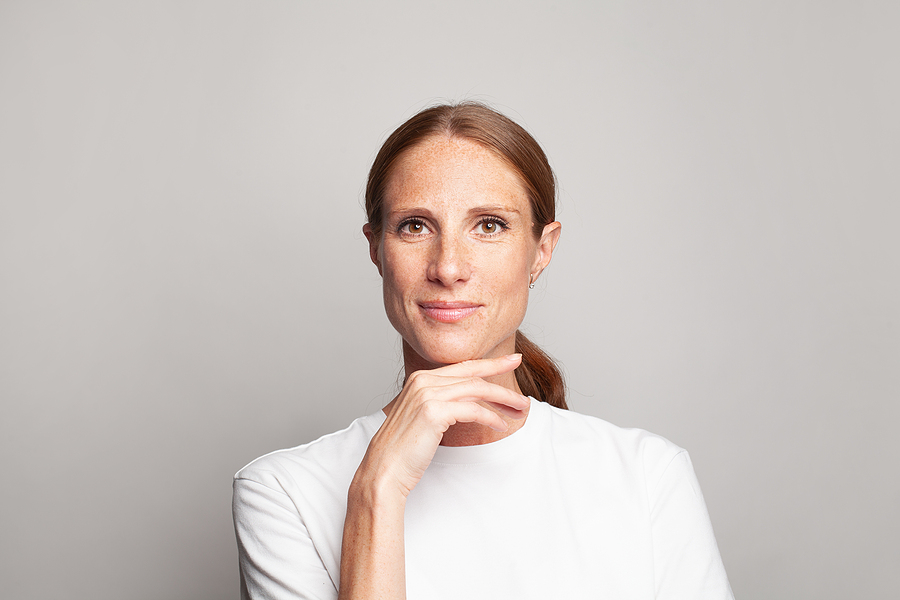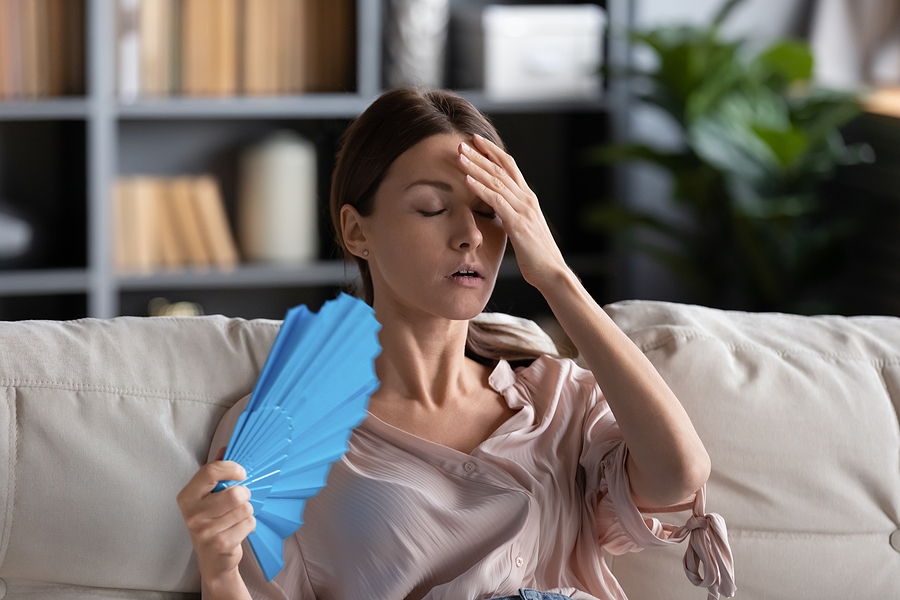I know that some people can be dismissive about abnormal hair growth, but I never am.
Whether it’s linked to a hormonal imbalance or it’s just an expression of your genetic makeup, I completely understand that it can be confusing and frustrating, and I also know that it can trigger or worsen body image issues for some women.
It’s also really hard to know what’s “normal” and what’s not! Of course, it varies from person to person, but most women just don’t know where to start or who to ask about it.
So, I’m here to help you get started!
If you’ve started to notice new, coarser, or darker hairs in areas like your chin, neck, chest, or around your nipples, you might have come across the term “hirsutism” and wondered if this is what’s going on.
Let me walk you through what hirsutism is (and what it isn’t), some of the most common causes of this condition and hair growth in general, and what you can do about it, including a few really helpful hormone-balancing supplements and other natural solutions.
Hirsutism: the basics
Hirsutism is essentially the term used for thick, dark hair growth on one or more areas of a woman’s body including (but not limited to) the face, chin, neck, chest, or legs.
This hair growth often occurs in places that we associate more with male hair patterns (like the “beard” area).
Hirsutism isn’t actually a disease, it’s a condition that can be the symptom of a disease (most commonly PCOS), but that can also be a benign, genetic occurrence.
If it’s not fully genetic, hirsutism is usually caused by a disruption in hormonal balance– namely, high levels of androgens (a group of hormones, including testosterone, that are generally more abundant in males) and/or insulin resistance.
Factors that can cause or contribute to hirsutism include:
- Genetics
- Natural hormonal changes (like menopause)
- The use of certain medications, including glucocorticoids, steroids, birth control pills, and some anti-seizure medications
- Insulin resistance
- PCOS
- Excess androgen production and/or increased sensitivity of androgen receptors around hair follicles
Hirsutism can come on gradually, or happen more suddenly, depending on the cause and other factors. The amount of hair, and where it grows, also varies person to person.
In and of itself, hirsutism isn’t harmful (though as mentioned above it can definitely be distressing). It’s also quite common. But, if it’s a sign of an underlying hormonal imbalance, that hormonal imbalance should be addressed to help resolve symptoms & prevent future problems!
Hirsutism, PCOS, and Insulin Resistance
Polycystic ovarian syndrome (PCOS), a condition that affects hormonal balance and ovary function, is the most common cause of hirsutism. If you’ve already been diagnosed with PCOS, and you’re experiencing abnormal hair growth, this is probably why.
In women with PCOS, the ovaries produce excess androgens, which we know are typically behind hirsutism. Many women with PCOS also experience insulin resistance, and insulin resistance can also directly trigger the increased production of androgens.
Keep in mind that you can have hirsutism without PCOS. But, especially if you’re experiencing other symptoms, it’s worth at least ruling it out.
How to know if your body hair is “normal”
First of all, I want to be careful about my use of the word “normal” here! Everyone is different, and various factors (but mostly genetics) will influence how much hair naturally grows on your body, and how dark it is.
I also want to add that there’s no “right answer” when it comes to body hair, appearance-wise. Some women are super comfortable with any and all growth, and others prefer to get rid of any stray hair that pops up, STAT.
I always encourage women to do what feels good for them! But, regardless of your preferences & comfort level with hair growth on different parts of the body, it’s worth looking into what’s going on beneath the surface.
The truth is, you probably know best what’s normal for you. So if you’ve noticed something unusual– hair where you don’t normally see it, and/or hair that’s darker, coarser, or just different than usual, it might be worth checking out.
Another important question to ask yourself is whether you’re experiencing other changes or symptoms, especially unexplained weight loss or weight gain, acne, or irregular periods.
Finally, consider whether or not you’re in a period of natural hormonal change (like menopause or postpartum). Think about the first time in your life when you started to notice changes or increases in hair on your body: it was probably during puberty! Similarly, hirsutism tends to be more common among women going through perimenopause or in menopause.
There’s also a test you can look up and do online, called the Ferriman-Gallwey score. Basically, this test will show you images of hair in different locations, and ask you to rate your level of “hairiness” in those areas on a numbered scale. From there, it will give you a reasonable idea of whether or not you have hirsutism, and to what degree.
The Ferriman-Gallwey test is definitely a helpful at-home tool to use as a starting point, but I would still recommend talking to a practitioner to get a better idea of what’s going on!
How to heal hormonal imbalances & hirsutism
I’m sure you know there are any number of ways to get rid of unwanted body hair, from shaving and waxing to laser hair removal and electrolysis. And I don’t know about you, but I’m constantly seeing ads online for new at-home devices that promise to have reinvented the wheel!
Any option you choose here (including leaving that hair alone!) is really your call. But I’d like to talk to you about what you can do to identify and address any hormonal imbalances that may be underlying your hirsutism.
Start with hormonal testing
Information is so empowering when it comes to your health, and this might be especially true for your hormones! There are just so many different things that can be going on, and a full profile will really help you (and your functional medicine practitioner) pinpoint and understand exactly where you need more balance and support.
But even if you don’t go for a full, comprehensive hormone panel, it’s a good idea to test for levels of androgens and glucose tolerance (to identify insulin resistance). Your doctor may also recommend an ultrasound for PCOS, and FSH level on day 7 of your cycle, if you are still having cycles, and a serum prolactin level.
Balance your blood sugar
Since hirsutism is so commonly linked to insulin resistance and blood sugar dysregulation, this is a key target to tackle.
The good news is there’s a ton you can do to balance your blood sugar just with your diet. It’s best to avoid refined carbohydrates and sugars, and eat balanced meals that contain plenty of fiber and protein.
When you eat also makes a big difference! Try to eat in regularly spaced intervals throughout the day to stay off the blood sugar rollercoaster.
Support your adrenals
Supporting your adrenal glands and your stress response can really help with PCOS and hormonal imbalance in general. In fact, stress is often a major trigger for these conditions.
One thing you can try is an adrenal-supporting supplement that contains adaptogens (stress response modulating herbs) like ashwagandha. My adrenal metabolism support formula is one option, and as a bonus, it also contains inositol (which helps to balance blood sugar), vitamin C (which calms inflammation, linked to PCOS), and a number of other hormone-supporting ingredients.
Always listen to your hormones
Hair growth, hirsutism, or otherwise, hormones are always top of mind for me and my patients! Even a slight imbalance in hormones can throw all kinds of things out of whack. But the good news is, there are so many natural ways to support hormonal balance and improve the underlying causes and symptoms of hirsutism, PCOS, and more.








